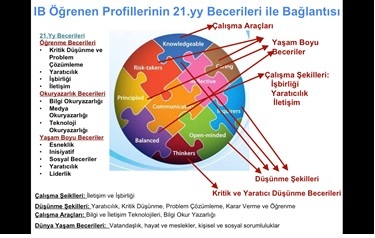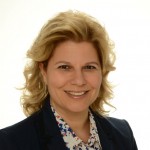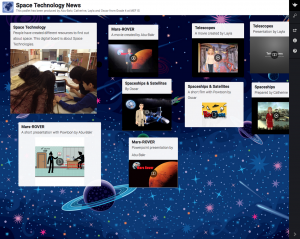PYP’de teknoloji entegrasyonu: “Teknolojiye değil öğrenmeye odaklanın” (1. Bölüm)
Teknolojiyle öğretim, öğrencilerde öğrenmeyi derinleştirebilir ancak teknoloji ek bir değer katmadan pahalı araçlarla mevcut materyallerin yerine geçerek öğretmenler açısından bir zorluk oluşturma tehlikesini de barındırabilir. Bu nedenle her okulun yapması gereken şey, uygulamaya geçmeden önce teknolojinin kullanımının amaç ve kapsamını belirlemek olacaktır.
Bu yıl MEF Uluslararası Okulu’nda 5 ve 6. Sınıflarda ‘1:1 BYO iPad’ yani “Kendi iPad’ini Getir” Programına devam ettik ve bilgiye erişim sağlama, araştırma yapma ve öğrenilenlerin sergilenmesi aracılığıyla iPadlerin iletişim, yaratıcılık ve işbirliği için ek bir araç olarak kullanılmasına karar verdik. Odak noktası öğrenmeydi ve bizler öğrencilerimizin tüketici olmalarından ziyade yaratıcı olmalarını istediğimiz için mümkün olduğunca havalı sunumlardan veya hazır uygulamalardan uzak durduk. Sınıf içerisindeki her bir teknoloji entegrasyonunun öğrenme sürecine bir değer katması gerekiyordu, bu yüzden de öğrenmeyi gözler önüne seren tüm çalışmalar içerik ve beceri bazında değerlendirildi. Öğrenciler, yönlendirici sorularla öğrendiklerini yansıtmaya teşvik edildi. Tüm yıl boyunca dijital vatandaşlık ve ilkelerle ilgili farkındalık eğitimi verildi. Öğrenciler iPad’lerini öğrenme amacı ile kullanmak zorundaydılar ancak okulda kahvaltı, öğlen yemeği ve teneffüslerde hiç bir şekilde iPad kullanılmasına izin verilmedi.
 İlkeler ve amacı belirledikten sonra, PYP’de dönüşümü sağlamak ve teknolojiyi entegre etmek istedik; bir yandan da 21.yüzyılın becerilerini öğrenme ortamımızda kapsama almayı istiyorduk. Bu beceriler son derece önemli olduğuna inanılan bilgi ve uzmanlıktan oluşur ve de 21.yüzyılda hem işte hem de hayatta başarılı olmak için bu becerilerde ustalaşmak şarttır. IB öğrenen profili, akademik başarının ötesindeki bir dizi beceri ve sorumluluğu tanımlar ve bunları doğrudan 21.yüzyılın becerileriyle bağlantılandırır; işte bunlar da öğrencilere düşünme ve çalışma yöntemleri, yani günümüzün iş ve hayat becerileri için araçlar sunmuş oldu.
İlkeler ve amacı belirledikten sonra, PYP’de dönüşümü sağlamak ve teknolojiyi entegre etmek istedik; bir yandan da 21.yüzyılın becerilerini öğrenme ortamımızda kapsama almayı istiyorduk. Bu beceriler son derece önemli olduğuna inanılan bilgi ve uzmanlıktan oluşur ve de 21.yüzyılda hem işte hem de hayatta başarılı olmak için bu becerilerde ustalaşmak şarttır. IB öğrenen profili, akademik başarının ötesindeki bir dizi beceri ve sorumluluğu tanımlar ve bunları doğrudan 21.yüzyılın becerileriyle bağlantılandırır; işte bunlar da öğrencilere düşünme ve çalışma yöntemleri, yani günümüzün iş ve hayat becerileri için araçlar sunmuş oldu.
Teknoloji, öğrencilerimize düşünme ve öğrenme yöntemlerini geliştirmeleri için bir temel sunarak onların öğrenmelerine ve yaşam becerilerini oluşturmalarına yönelik araçlar sunmuş oldu.
Odak noktasının teknolojiden ziyade öğrenmeye yönelik olduğu ilköğretimin üst sınıflarındaki PYP öğrenme ortamındaki teknoloji entegrasyonuna yönelik bazı örnekleri burada bulabilirsiniz:
- PADLET: ‘Padlet’ öğretmenlerin sınıf için dijital bir pano oluşturmasını sağlayan ücretsiz bir Web 2.0 uygulamasıdır. ‘Padlet’ en iyi sınıfta beyin fırtınası yaparken, tartışmalarda ve aktif katılımının sağlanmasında kullanıldığı gibi aynı zamanda bireysel projelerde, not almada, etkinlik düzenlemede ve söz dağarcığı çalışmalarında da kullanılabilir. Padlet kullanımı ile sınıf içindeki tüm öğrencilerin dijital pano üzerinde aktif katılımı sağlanmış oldu. Bu proje boyunca öğrenciler şu öğrenen profili özelliklerinin pratiğini yaptılar: dönüşümlü düşünen, araştıran-sorgulayan, düşünen, açık görüşlü, bilgili ve iletişim kuran ve bilgili olma.
Aşağıda bir grup 4. Sınıf öğrencisi tarafından oluşturulmuş bir dijital pano örneği yer almaktadır. Her bir öğrenci Uzay Araçları ve Teleskoplar üzerine kendisinin yapmış olduğu araştırma projesinin sonunda ortaya çıkan sunum ya da videosunu bu dijital pano üzerinden paylaşmıştır.
- Sanal okul gezileri planlanma ve gerçekleştirme: Öğrencilerinizi hiç sanal bir geziye götürdünüz mü? Eğer yanıtınız ‘Hayır’ ise kesinlikle çok büyük bir fırsatı kaçırıyorsunuz çünkü birçok müzeyi ziyaret etme, “Vücudumuza Sanal Yolculuk”taki gibi bilimsel keşif gezileri yapma ya da NASA’nın uzay mekiğine yapılacak sanal tur gibi bir çok seçenek bulunmakta. Sanal okul gezileri, şu öğrenen profili özellikleriyle ilişkilendirilmektedir: bilgili, araştıran-sorgulayan, düşünen, açık görüşlü ve iletişim kuran.
- CROAK-IT : Bu uygulama hem iPad hem de Android cihazlarda kullanılabilmektedir. Öğrencilerinizin sınıfta öğrendiklerini 30 saniyelik parçalar halinde sınıfın sayfasına yükleyerek bu konular hakkında bir şeyler yaratmalarını, tartışmalarını ve üzerinde dönüşümlü düşünmelerini sağlayabilirsiniz. Bu uygulamanın en sevdiğim tarafı bu dönüşümlü düşünme sürecinde her bir öğrencinin sesi duyulmuş oluyor. Öğrenciler bu projeyle dönüşümlü düşünme, bilgili, düşünen ve iletişim kuran olma özelliklerinin pratiğini yapma olanağı yakalamış oldu.
- INSTAGROK: ‘Instagrok’ öğretmen ve öğrencilere yönelik eğitsel bir arama motorudur ve girilen anahtar sözcüğe göre videolar, görseller, websiteleri ve küçük sınavlar gibi bir çok kaynağa erişim sağlar. Aynı zamanda kavram tanımlamaları ve kavramlar arası ilişkileri ekrana getirerek öğrencilere bu kavramlardan hareketle bir şeyler oluşturma olanağı sağlar. Bu uygulamayla öğrenciler araştırma yaparken, kürasyon yaparken, sonuçları paylaşırken, yaratıcı düşünme ve yazma becerileri üzerinde çalışırken öğrenme ve okur yazarlık becerileri konusunda pratik yapma olanağı yakaladılar.
Önümüzdeki hafta yazının ikinci bölümünde daha fazla örnek verilecektir.
—
Geçtiğimiz iki yıl süresinde Bayan Yağcı, MEF Uluslararası Okulunda, Google Eğitim Uygulamaları ve BYO-iPad yani kendi İPad’ini getir projelerini yürürlüğe koymuştur. Eğitim teknolojilerine olan tutkusu ile Ufuk Yağcı MEF Uluslararası Okullarında öğrenci ve öğretmenlerle birlikte öğretme ve öğrenme ortamlarına değer katacak teknoloji entegrasyonları üzerinde çalışmaktadır.

Ufuk Yagci is the Educational Technology Coordinator at MEF International School in Istanbul, Turkey
This is the first of a two-part article which illustrates how a PYP school in Turkey piloted a one-to-one BYOD (bring your own device) using iPads in upper elementary.
Teaching with technology can deepen student learning, yet it can be challenging for teachers – with the danger of replacing current materials with expensive tools, without adding extra value. That is why each school should define the purpose and scope of the usage of technology before implementing them.
This year at MEF International School we continued our 1:1 BYO (bring your own) iPad programme for our grades 5 and 6 students and decided to use the iPads as an additional tool for communication, creativity and collaboration through accessing information, researching and as a showcase to demonstrate learning. The focus was on learning and we tried our best to stay away from making flashy presentations or use ready-made applications, as we wanted our students to be creators rather than consumers. Each technology integration in the classroom had to add value to the learning process and all tasks that showcased learning were assessed for content and skills. Students were urged to reflect their learning with guiding questions. An ongoing education on digital citizenship and awareness on principles was given throughout the year. Students were responsible for using iPads for learning but on the school grounds no iPads during breakfast, lunch or recess times were allowed.
 Having set the guidelines and purpose, we wanted to transform and integrate technology in the PYP, but we also wanted to cover the 21st century skills in our learning environment. These skills consist of knowledge and expertise that are believed to be critically important and that it should be mastered to succeed in work and life in the 21st century. The IB learner profile describes a range of human capacities and responsibilities that goes beyond academic success and links directly to 21st century skills, which provided the students with the ways of thinking and working – tools for work and life skills today.
Having set the guidelines and purpose, we wanted to transform and integrate technology in the PYP, but we also wanted to cover the 21st century skills in our learning environment. These skills consist of knowledge and expertise that are believed to be critically important and that it should be mastered to succeed in work and life in the 21st century. The IB learner profile describes a range of human capacities and responsibilities that goes beyond academic success and links directly to 21st century skills, which provided the students with the ways of thinking and working – tools for work and life skills today.
Technology has enabled our student community with a basis for enhancing their way of thinking and learning, providing tools for learning and building up their life skills.
Below are some examples of this technology integration in the PYP learning environment in the upper elementary school where the main focus has been on learning and not on technology.
PADLET: ‘Padlet’ is a free Web 2.0 application, which allows the teachers to build a digital wall for the classroom. The best use of ‘Padlet’ is for brainstorming, discussions and active participation in the classroom but it can also be used for individual projects, note-taking, organizing events and vocabulary practices. Padlet usage enabled every students’ participation on the digital wall. Students have practiced the following learner profile attributes throughout this project: reflective, inquirer, thinker, open-minded, communicator and knowledgeable.
Below is a sample digital wall formed by a group of 4th graders. Each student posted their presentation or video as a result of their research project on spacecraft and telescopes.

Planning and making virtual field trips: Have you ever taken your students on a virtual field trip? If not, you are missing a great opportunity, as there are more and more options for visiting museums or making scientific excursions like the “Virtual Body Tour” or the virtual field trip to NASA’s space shuttle. The following learner profile attributes are addressed with virtual field trips: knowledgeable, inquirer, thinker, open-minded, communicator.
CROAK-IT : This is an application that is available for iPads and android devices which you can use to have your students create, discuss and reflect what they have learned in class as 30 second snippets and you can upload them to your class page. What I like best about this application is that every student has a voice in the reflection time. Students practiced being reflective, knowledgeable, thinkers and communicators with this project.
INSTAGROK: This is an educational search engine for students and teachers, which provides them with all kinds of resources on a keyword like videos, images, websites and quizzes. It also displays concept definitions and relationships between concepts allowing the students to build up on these concepts. Learning and literacy skills were practiced as students researched, curated and shared results and worked on their creative thinking and writing skills with this implementation.
More samples will be given in Part 2 of this article next week…
—
Ufuk has implemented Google Apps for Education and BYO (bring your own) iPad Projects at MEF International School in the past two years. She is passionate about educational technology and is working on the integration of technology that will add value on the teaching and learning environment together with the teachers and students of MEF International School Community.

That’s the point I have been pointing out too to my colleagues that keeping aside the awe and wonder behind using technology, we must always concentrate on the core learning which it brings along. That’s one of the biggest struggles for me too as an ICT teacher at my school.